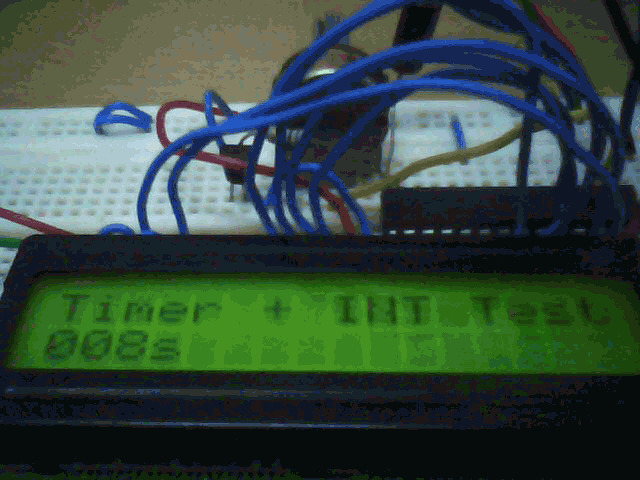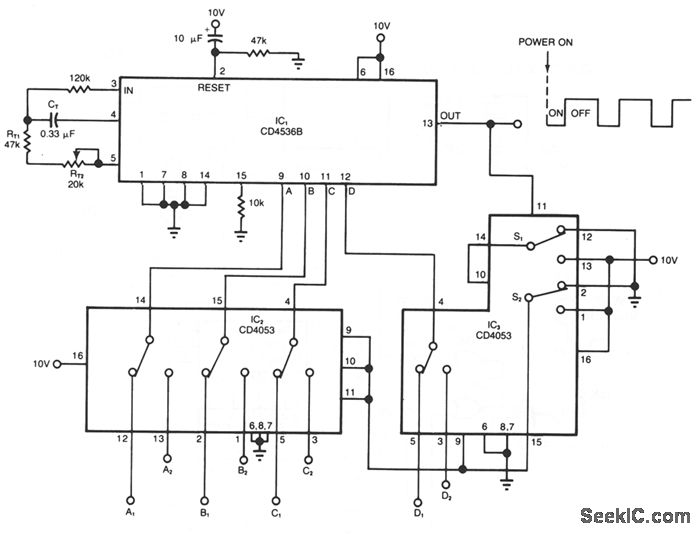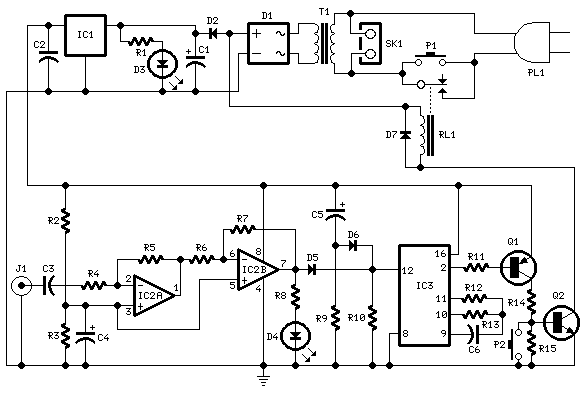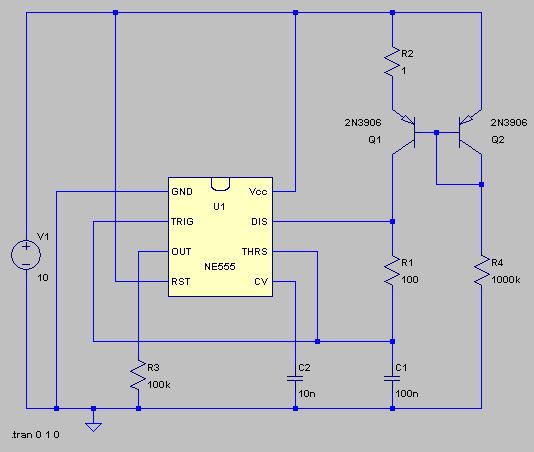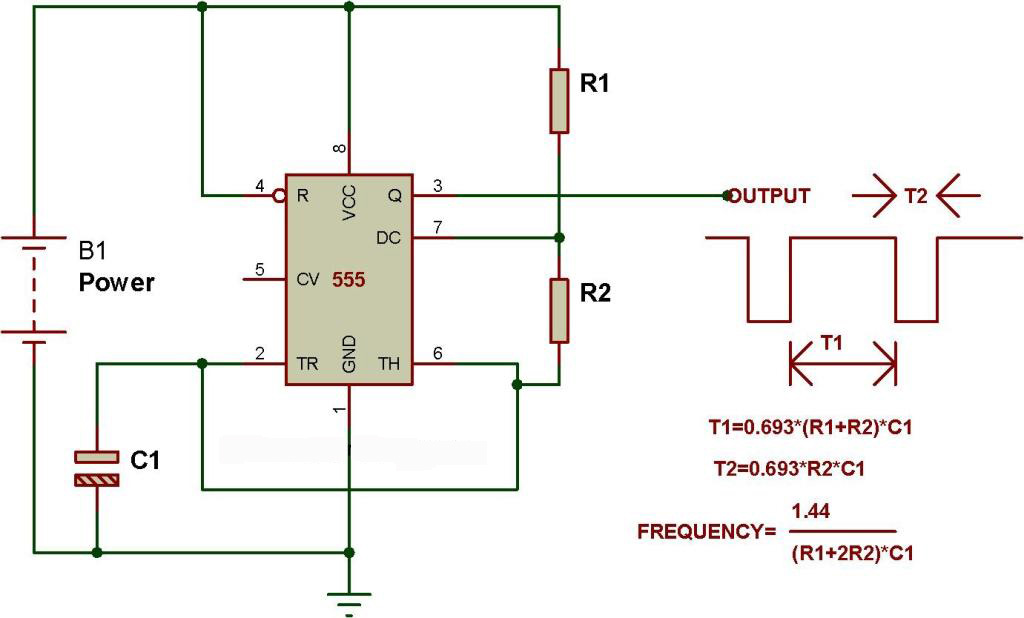
cmos 4017 sequential timer
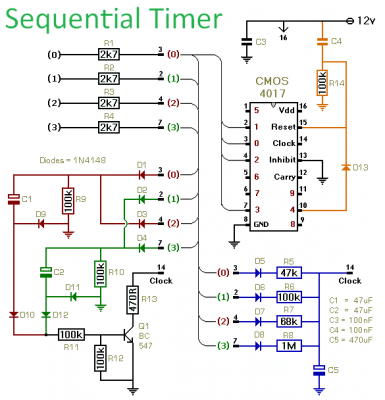
This timer is designed to manage a sequence of up to ten distinct events, with each event's duration adjustable independently. The sequence can either run for a predetermined number of cycles or continue indefinitely. Additionally, the individual events within the sequence can be configured to repeat and/or overlap. The provided support material contains a comprehensive explanation of the operation of the CMOS 4017.
The described timer circuit utilizes the CMOS 4017 decade counter, which is capable of counting up to ten separate events, each triggered by a clock pulse. The configuration allows for each output of the 4017 to be connected to different loads or functions, enabling a versatile application in various timing scenarios.
To implement this timer, the circuit begins with a clock source, which can be a simple astable multivibrator using a 555 timer or a microcontroller output. The clock signal is fed into the clock input of the CMOS 4017. Each time the clock pulses, the 4017 advances its output from Q0 to Q9 sequentially.
For event duration control, a combination of resistors and capacitors can be utilized to create an adjustable timing mechanism. Each output can be connected to a separate timing circuit that determines how long that output remains active. This can be achieved with additional RC timing circuits or by using programmable logic devices.
The functionality of repeating and overlapping events is achieved by wiring the outputs back into the clock input or using additional logic gates to create feedback loops. This allows for complex timing sequences where certain events can trigger subsequent events before they complete, creating an overlapping effect.
The ability to set the timer to run for a fixed number of cycles or continuously can be managed with a simple toggle switch or a microcontroller that monitors the output states. If a fixed number of repetitions is desired, a reset mechanism can be integrated to stop the clock after the last event has been executed.
Overall, this timer circuit offers flexibility in event management, making it suitable for applications in automation, signal generation, and other timing-dependent tasks. The detailed operation of the CMOS 4017, as outlined in the support material, provides essential insights into the integration and functioning of this timer circuit.This timer will provide a sequence of up to ten separate events. The length of each event is set independently. And the sequence will run a fixed number of times - or repeat continuosly. The individual events within the sequence - can be made to repeat and/or overlap. The accompanying Support Material includes a detailed description of how the Cmos 4017 works.. 🔗 External reference
The described timer circuit utilizes the CMOS 4017 decade counter, which is capable of counting up to ten separate events, each triggered by a clock pulse. The configuration allows for each output of the 4017 to be connected to different loads or functions, enabling a versatile application in various timing scenarios.
To implement this timer, the circuit begins with a clock source, which can be a simple astable multivibrator using a 555 timer or a microcontroller output. The clock signal is fed into the clock input of the CMOS 4017. Each time the clock pulses, the 4017 advances its output from Q0 to Q9 sequentially.
For event duration control, a combination of resistors and capacitors can be utilized to create an adjustable timing mechanism. Each output can be connected to a separate timing circuit that determines how long that output remains active. This can be achieved with additional RC timing circuits or by using programmable logic devices.
The functionality of repeating and overlapping events is achieved by wiring the outputs back into the clock input or using additional logic gates to create feedback loops. This allows for complex timing sequences where certain events can trigger subsequent events before they complete, creating an overlapping effect.
The ability to set the timer to run for a fixed number of cycles or continuously can be managed with a simple toggle switch or a microcontroller that monitors the output states. If a fixed number of repetitions is desired, a reset mechanism can be integrated to stop the clock after the last event has been executed.
Overall, this timer circuit offers flexibility in event management, making it suitable for applications in automation, signal generation, and other timing-dependent tasks. The detailed operation of the CMOS 4017, as outlined in the support material, provides essential insights into the integration and functioning of this timer circuit.This timer will provide a sequence of up to ten separate events. The length of each event is set independently. And the sequence will run a fixed number of times - or repeat continuosly. The individual events within the sequence - can be made to repeat and/or overlap. The accompanying Support Material includes a detailed description of how the Cmos 4017 works.. 🔗 External reference
